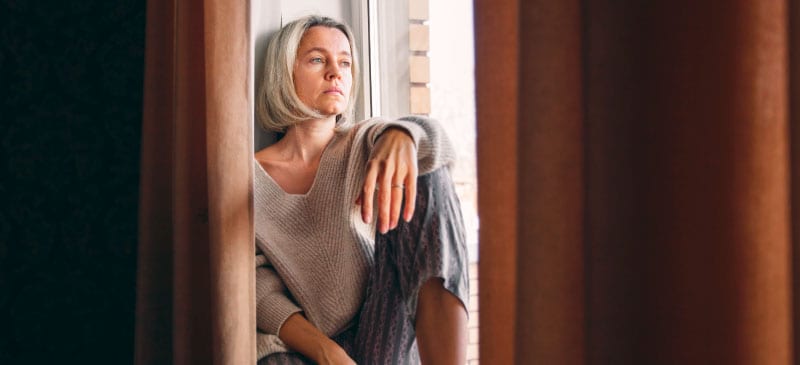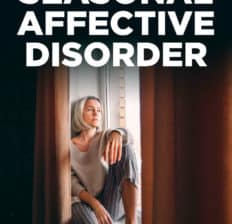This Dr. Axe content is medically reviewed or fact checked to ensure factually accurate information.
With strict editorial sourcing guidelines, we only link to academic research institutions, reputable media sites and, when research is available, medically peer-reviewed studies. Note that the numbers in parentheses (1, 2, etc.) are clickable links to these studies.
The information in our articles is NOT intended to replace a one-on-one relationship with a qualified health care professional and is not intended as medical advice.
This article is based on scientific evidence, written by experts and fact checked by our trained editorial staff. Note that the numbers in parentheses (1, 2, etc.) are clickable links to medically peer-reviewed studies.
Our team includes licensed nutritionists and dietitians, certified health education specialists, as well as certified strength and conditioning specialists, personal trainers and corrective exercise specialists. Our team aims to be not only thorough with its research, but also objective and unbiased.
The information in our articles is NOT intended to replace a one-on-one relationship with a qualified health care professional and is not intended as medical advice.
7 Seasonal Affective Disorder Natural Treatments That Work
January 17, 2023

Do your energy levels plummet once the summer months are over? Does your motivation to socialize with friends and family or even leave the house disappear when the sun does, and do you start to feel more “normal” when springtime — and more daylight hours — return? You might be suffering from seasonal affective disorder (SAD).
The winter blues are well-known and quite common — after all, these months come packed with a lot of holidays that can be emotionally draining. Combine that with minimal time in the sunshine, especially if you work in an office, and cold weather that seems to scream “stay home and get in a blanket,” and it’s no wonder that people tend to be a bit anti-social and grumpy from November until about April.
For some people, the “winter blues” are more than just curling up with Netflix for a few weekends in a row. Those who suffer from seasonal affective disorde actually experience a type of depression that rears its head during certain seasons.
What Is Seasonal Affective Disorder?
SAD is a form of clinical depression that comes and goes in a seasonal pattern. It’s also referred to as “winter depression,” because that’s usually the time when symptoms become more pronounced and noticeable. This bout of depression begins and ends around the same time each year.
Millions of Americans suffer from SAD in its strictest form each year, and it seems to affect women more than men. SAD affects people from September to April, with peak (read: worst) times occurring in December, January and February.
For most people, their first winter experiencing seasonal affective disorder will occur between the ages of 18 and 30 years old, though a change in location, such as a major move later in life, can bring on symptoms.
Related: Sun Lamp Uses and Benefits (Plus How to Buy One)
Causes
Researchers aren’t sure what causes SAD, but it is a type of major depressive disorder. SAD patients can be just as depressed as those suffering from other forms of depression — this is a serious condition.
While the exact reasons for SAD aren’t clear yet, it’s believed that a vitamin D deficiency and a lack of sunlight keep a part of the brain, the hypothalamus, from working properly, leading to a disruption of circadian rhythms. When our circadian rhythms are out of whack, it can affect our levels of melatonin and serotonin.
In people with SAD, melatonin, the hormone that makes us feel sleepy, might be produced in higher levels, leading to increased feelings of lethargy. On the other hand, serotonin levels decrease.
Serotonin is a hormone that affects mood and appetite. Not having enough serotonin is linked to depression.
Because seasonal affective disorder seems to be more common in women than men, being female is a risk factor. Additionally, there seems to be a genetic predisposition to seasonal affective disorder, as it often runs in families.
Unsurprisingly since seasonal affective disorder is so tied to sunlight, location makes a difference. SAD is more common among people who live far north or south of the equator, thanks to abbreviated daylight winter hours and longer days during summer months.
Related: Color Therapy Benefits for Mood & More (Plus How to Do It)
Symptoms
Seasonal affective disorder symptoms vary from person to person. Generally, symptoms might start out mild and become more severe during the peak winter months of December through February. They start to ease up once sunnier spring days begin emerging.
People suffering from SAD experience:
- a decrease in energy
- trouble sleeping
- a loss of interest in activities
- difficulty concentrating
- depressive feelings
- a decreased sex drive
- appetite or weight gain changes —
Sugar addiction and cravings for carbs and other comfort foods are also common in people with seasonal affective disorder.
It can be difficult to determine if a person is suffering from “traditional” depression or if it’s SAD. The telltale sign is when you begin experiencing these depressive feelings.
Usually, the feelings begin in September, are at their worst during the peak winter months, and start easing up in March or April. A diagnosis will often not be made until two to three consecutive winter seasons with the symptoms.
Health professionals will evaluate that you’ve had depression that begins and ends in a specific season every year, no episodes of depression during other seasons, and more seasons of depression than seasons without depression. Your doctor will probably do a physical exam, which might include lab testing to rule out any other health problems and a psychological evaluation.
Related: How to Cope With Cabin Fever: Symptoms, Tips & More
Treating SAD with Natural Remedies
There are several natural, prescription-free remedies you can try for seasonal affective disorder.
1. Get a Light Box
If your outdoor hours are limited during the winter months, a light box might be a worthwhile investment. In fact, the majority of SAD patients see improvements in their disposition.
Light therapy allows you to get exposure to bright, artificial light during the most difficult months. It’s recommended that SAD patients use light therapy daily, from the first signs of symptoms until the springtime, when SAD resolves itself.
Most people require between 15 to 30 minutes of therapy a day and will start feeling improvements within two to four days, with the full improvement happening within two weeks.
Because seasonal affective disorder symptoms return quickly once light therapy stops, remaining consistent with treatment during the winter months is crucial. It’s also often recommended that light treatment occur in the morning to prevent difficulties falling asleep later in the evening.
Light therapy boxes are available without a prescription, but they can come with side effects, like headaches or eye strains. Because of UV exposure, it’s also recommended that you see a health provider who specializes in light therapy to ensure you get the right amount of light and filter out dangerous UV rays.
2. Keep Exercising
I know — it can be difficult enough to hit the gym when you’re feeling great, never mind when you’re not up to par. But regular exercise has been proven to help with traditional types of depression, and SAD is no different.
Staying active increases the production of feel-good chemicals that can help ease depressive feelings and even brain fog. In one study, just 30 minutes of walking on a treadmill for 10 consecutive days was enough to produce a significant reduction in depression.
Research also suggests that the frequency and consistency of exercising, rather than the duration or intensity, has the most positive effect. You don’t need to run a marathon or start up CrossFit to reap the healing benefits of exercise.
Join a group fitness class, rev up the treadmill or practice yoga. It all helps.
3. Add a Vitamin D Supplement
Vitamin D, or the sunshine vitamin, has been linked to depression. Patients with seasonal affective disorder often have low levels of the vitamin.
While scientists aren’t sure why that’s the case, it’s worth checking with your doctor to make sure your vitamin D levels are up to par. Because most U.S. adults have some type of deficiency in the vitamin, adding a supplement could help you feel better and even improve bone health and boost your immune system.
In addition, there is some evidence that using St. John’s wort together with phototherapy works even better as a way to beat the winter blues.
4. Get Outside
When there is a ray of sunlight during the cold, dark months, take advantage.
Sleep with curtains and blinds open to get in any glimmer of sunshine in the morning. Break up your workday with an early afternoon walk to soak up some vitamin D naturally.
Bundle up and try to get as much natural light as possible. Your brain and body will both thank you for it.
Bonus points if you can squeeze your workouts in outside, no matter if it’s an early morning stroll solo or a weekend game of fetch with the dog.
5. Talk It Out
Cognitive behavioral therapy (CBT), a type of psychotherapy that helps people change unhelpful or unhealthy habits of thinking, feeling and behaving, can help alter your way of thinking, focusing on positive solutions instead of saying, “Forget it, I’m skipping those dinner plans I made.”
While CBT is useful for many types of depression and mental health disorders, there’s renewed interest in using it as a treatment for seasonal affective disorder. In fact, a study published in the American Journal of Psychiatry found CBT could be more helpful to SAD patients than light therapy in the long run.
The study tracked 177 people with seasonal affective disorder as they were given either light therapy or cognitive behavioral therapy designed for SAD over six weeks and then checked in with them over the next two winters.
During the first winter, light therapy and CBT worked equally as well in reducing depression symptoms, but by the second check-in appointment, CBT pulled into the lead. In the group of patients who received CBT to treat their seasonal affective disorder, 27.3 percent had their depression come back the following winter, while 45.6 percent of those who received light therapy did.
For those folks who were treated with CBT but still experienced a return of seasonal affective disorder, their symptoms were milder than those who were treated with the light therapy.
The difference, according to Kelly Rohan, a lead author of the study, might be that CBT teaches people skills and coping mechanisms they can employ at any time, while light therapy requires spending a certain amount of time daily to reap the effects, while not feeling in control of emotions.
6. Eat a Healthy Diet
It all comes back to food, doesn’t it? While people with SAD crave comfort foods — starchy carbs, sweet treats and more — eating that way ensures you’ll look and feel worse.
Instead, focus on a SAD-busting, healing diet. Lots of lean protein, leafy greens and fish will keep hormones in check and boost serotonin levels.
When you do get the urge for carbs, choose complex, whole-grain varieties, like whole-grain pasta and bread, instead of nutrition-deficient white carbohydrates.
7. Reach Out for Help
Depression, no matter the type, can feel extremely isolating. Reaching out to friends and family and establishing a support network can help ease the burden.
If you suspect you’re at risk for seasonal affective disorder, be sure to reach out to your health professional.









